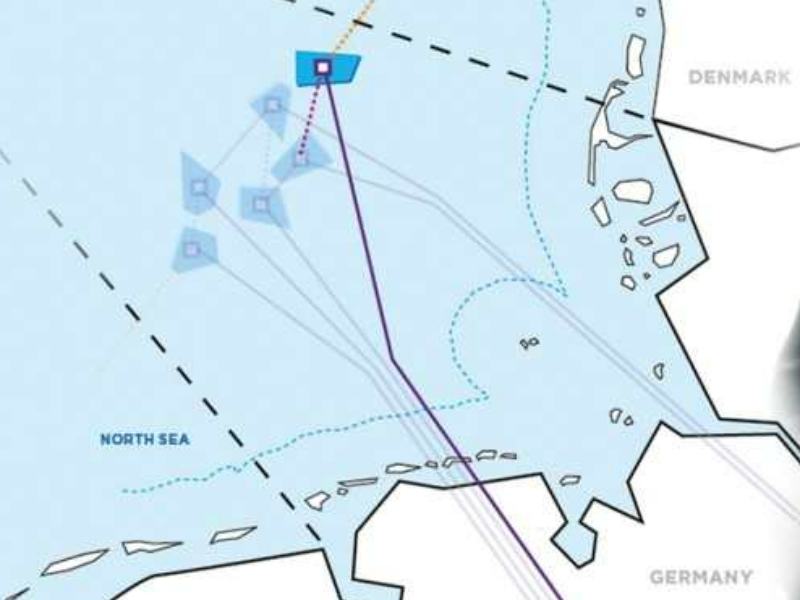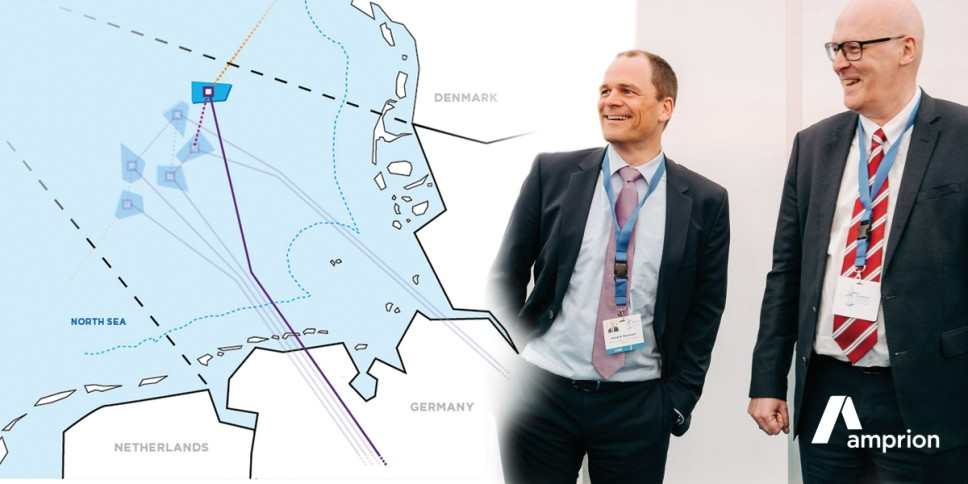
Interconnector map. Courtesy Amprion.
German TSO Amprion and their Danish counterpart Energinet have signed an MoU to develop an interconnector between the two countries, transporting surplus green energy from a Danish energy island directly onto the German transmission grid.
The interconnector will aim to increase security of supply in Denmark, Germany and Europe through international flexibility options. Details of such options have not yet been released.
The interconnector will connect the coming Danish North Sea Energy Island to the German transmission grid via future offshore hubs and grids in the German part of the North Sea.
The interconnector would also offer the two TSOs various options for maintaining the frequency and voltage in the respective transmission systems at all times.

Amprion CTO Hendrik Neumann and Energinet CEO Thomas Egebo at the North Sea Summit in Ostend, Belgium; Credits: Amprion/STYN.be
“An interconnector between Denmark and Germany is an important step towards harvesting the huge wind power potential in the North Sea and connecting it to the European mainland, thus securing supply of renewable energy to households and industry right in the heart of Germany and Europe where future demand will grow”, stated Thomas Egebo, CEO of Energinet.
Through interconnection, surplus green electricity can be transported from the Danish energy island in the North Sea directly to the load centres in Germany.
Additional welfare effects would then result from reduced greenhouse gas emissions, increasing European market integration and new jobs.
The interconnector, states Amprion, will make an important contribution to achieving climate neutrality and prosperity through secure supply in both countries and across Europe.
The announcement of the interconnector was made at the North Sea Summit, whereby European countries committed to 300GW in North Sea-generated wind by 2050.
It is one of a series of recent announcements aiming to transform the North Sea into ‘Europe’s green power plant’.
A similar project has come out of a partnership between National Grid and TenneT, the LionLink interconnector that will be the first step in creating a North Sea integrated grid.